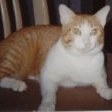Bathroom Water Heater Issues
-
Recently Browsing 0 members
- No registered users viewing this page.
-
Topics
-
-
Popular Contributors
-
-
Latest posts...
-
33
Tariffs, tariff and tariffs again
Trouble is, deals mean nothing. The day after they're signed someone will show Trump that photo of his wife snogging Trudeau, he will throw a hissy fit, go back on social media and the whole deal will be off. -
62
Health New COVID-19 Sub-Variant XFG Emerges in Thailand
I'll save the AN news gathering team some time with this suggestion: keep this text on file and just add the name of the new variant, the expert of choice and other basic details! Thailand has detected a new sub-variant of COVID-19, known as ---, or "-----," with -- infections recorded since ----, according to -------, ------- of the --------. This development comes as the World Health Organisation (WHO) designated ---- a variant to monitor on ----, highlighting its rapid spread and potential to evade the immune system. There is, however, currently no evidence that ----- causes more severe symptoms than other sub-variants. I do wish these reports would include the fabled R number that used to be a staple feature, and which told the reader just how transmissible the new variant was. By now it must be so high that you can catch some of these variants just by looking at someone who has it! -
105
Community American Tourist Assaulted by Bar Owner for Filming Venue
He didn’t listen and still filed a complaint. Grow up, 38 years old, you have no chance to win -
33
Have You Met Foreigners in Thailand Who Talk Big, But Live Small?
I am not surprised, your type of stuff, until it affects you, eh................😉 And why would I act on an order from you...........😂......... priceless.........- 1
-

-
18
This guy is the US Sec. of Defense
If Trump is so bad why does the media need to constantly edit or take out of context what he says..... just let the tapes roll.- 1
-

-
79
Thai Bread
For authentic Sourdough bread try Chou-Chou French Bakery if you are ever in the Bang Saray area. https://www.facebook.com/profile.php?id=100088825975099
-
-
Popular in The Pub






.thumb.jpeg.d2d19a66404642fd9ff62d6262fd153e.jpeg)






Recommended Posts
Create an account or sign in to comment
You need to be a member in order to leave a comment
Create an account
Sign up for a new account in our community. It's easy!
Register a new accountSign in
Already have an account? Sign in here.
Sign In Now